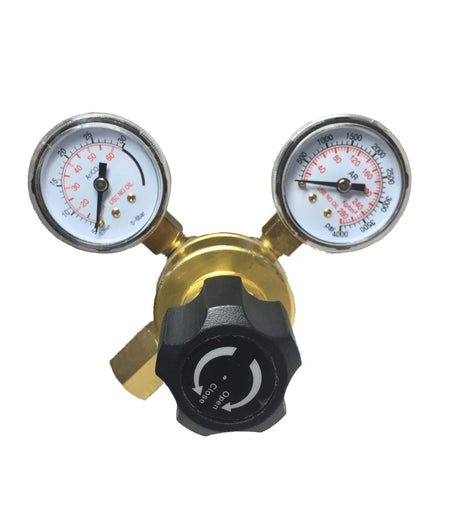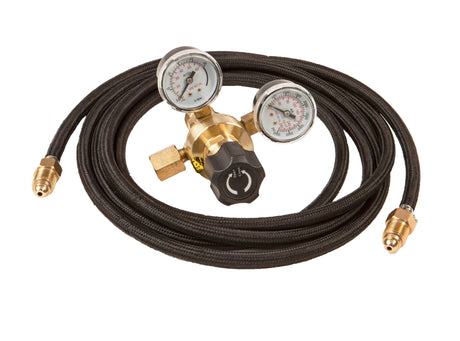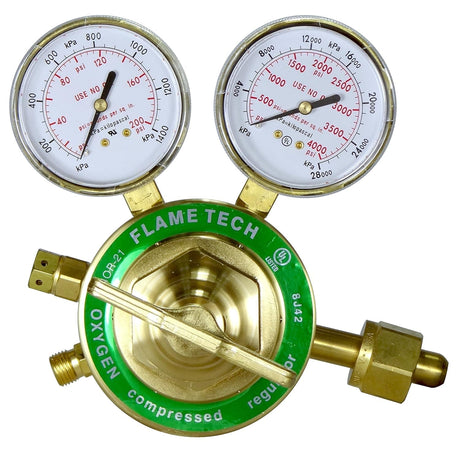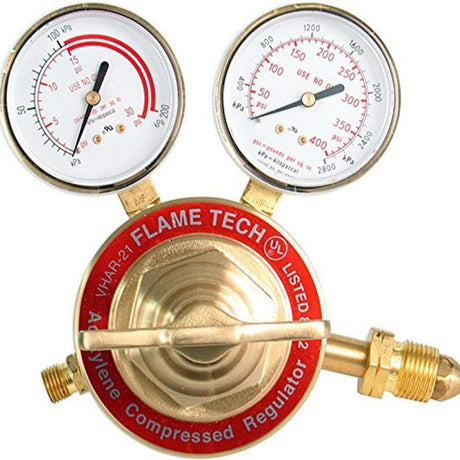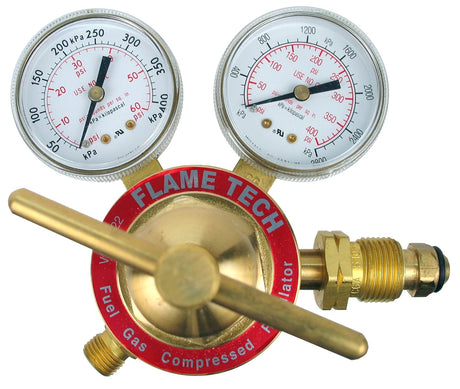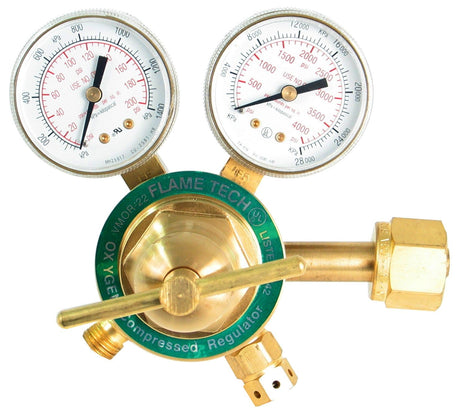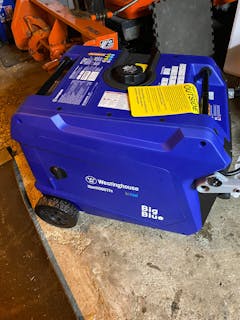Assurez un contrôle précis du débit de gaz grâce à nos régulateurs haut de gamme, conçus pour le soudage, le découpage et les applications industrielles. Robustes et fiables, nos régulateurs sont compatibles avec divers gaz, dont l'oxygène, l'acétylène, le propane et les gaz de protection inertes. Que vous ayez besoin de régulateurs à un ou deux étages, notre gamme offre des réglages de pression précis pour répondre à vos exigences spécifiques. Parfaitement adaptés aux environnements canadiens, ces régulateurs sont conçus pour résister aux conditions les plus difficiles tout en garantissant des performances constantes. Découvrez notre gamme pour trouver le régulateur idéal pour votre système de soudage ou de découpage.
1. À quoi servent les régulateurs de gaz en soudage ?
Les régulateurs de gaz gèrent le débit et la pression des gaz tels que l'oxygène, l'acétylène et les gaz de protection, assurant un fonctionnement sûr et précis lors des opérations de soudage ou de découpe.
2. Quelle est la différence entre les régulateurs de gaz à un étage et à deux étages ?
Les régulateurs à un étage réduisent la pression en une seule étape, convenant aux tâches de courte durée, tandis que les régulateurs à deux étages offrent un contrôle de pression plus stable pour les applications plus longues et plus exigeantes.
3. Où puis-je acheter des régulateurs de gaz ?
Trouvez des régulateurs de gaz haute performance chez Crossfire Welders, offrant une variété d'options pour le soudage, le découpage et les besoins industriels.
4. Comment choisir le régulateur de gaz adapté à mon application ?
Le choix du détendeur de gaz approprié dépend du type de gaz, de la plage de pression requise et de l'application. Par exemple, les détendeurs d'oxygène et d'acétylène sont couramment utilisés pour le découpage et le brasage, tandis que les détendeurs de gaz inerte sont utilisés pour le soudage MIG et TIG.
5. Les régulateurs de gaz sont-ils universels pour tous les systèmes de soudage ?
Non, les régulateurs de gaz sont souvent spécifiques à un type de gaz et peuvent nécessiter des raccords compatibles. Vérifiez les exigences de votre système ou consultez Crossfire Welders pour obtenir des conseils d'experts.
6. Comment entretenir un régulateur de gaz ?
Un entretien adéquat comprend des contrôles réguliers pour détecter les fuites, le nettoyage des filetages de raccordement et la vérification du bon fonctionnement des manomètres afin de maintenir la sécurité et les performances.
7. Quelle est la pression maximale qu'un régulateur de gaz peut supporter ?
La pression maximale varie selon le modèle. Consultez toujours les spécifications du régulateur pour vous assurer qu'il répond aux exigences de votre application.

